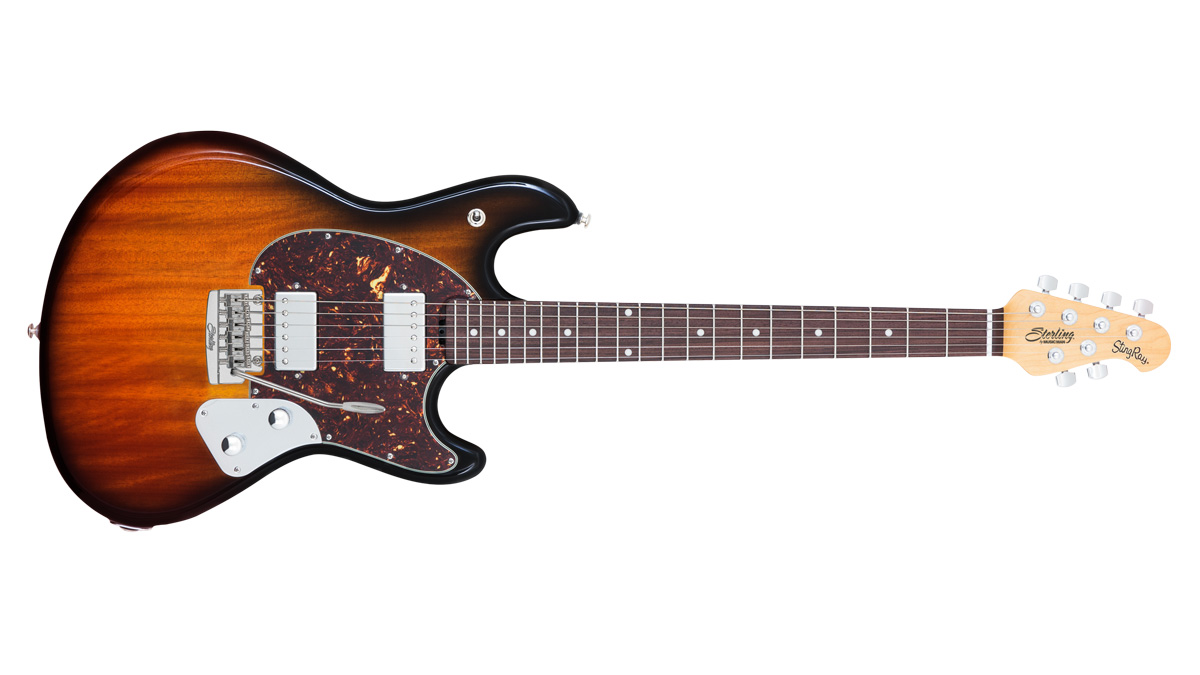MusicRadar Verdict
Sterling will always be a leftfield choice when it comes to choosing a guitar of this kind, but if you're keen to straddle the gap between Fender and Gibson's classic appointments, this is a great place to look.
Pros
- +
Near-perfect finish. Tuning stays locked in. Fantastically playable.
Cons
- -
Neck humbucker is a little heavy on low-end.
MusicRadar's got your back
The StingRay bass has a modern tone and slick playability that sets it apart from Leo Fender's other great bass designs - the Precision and Jazz.
You can tell a StingRay fan; they have thumbs like a lump hammer.
The original StingRay guitar had less of an impact, but at the time it was still a unique beast, with double-cut body, five-way pickup switch, six-in-line headstock and the dual humbuckers.
As with the G&L guitars that Leo went on to design, it sought to evolve Leo's most famous creation, but perhaps was always destined to live slightly off to the left of the Strat's centre.
"It certainly delivers the goods for classic rock and blues."
Music Man reissued the StingRay guitar earlier this year, but this Sterling version shaves a grand off the price tag. Not that you'd really know it - out of the box it's clear that this is a guitar that means business, starting with the weight. At 3.75kg, it's a hefty slab of mahogany.
The finishing is near-perfect throughout, with the blemish-free Three-Tone Sunburst and chrome hardware combining for a classy look. The only slight disappointment is around the back - the pickup selector cavity is covered with a matching red tortoiseshell cap, but it's mounted on top of the body, rather than flush against it. It's a small detail, but it'll bother perfectionists.
The playability of the StingRay more than makes up for this, though; the satin-finish neck is a comfortable modern U shape, slightly flatter-feeling than the more rounded C-shapes you'll find on most Strats. Not better, per se, just different, while the heel gives those who venture to the unpaid end of the neck unhindered access to those top frets.
It's attached to the body with a five-bolt fitting, and the truss rod is helpfully adjustable from a thumbwheel: no taking the neck off here. We're also impressed with the vibrato, which holds it together for everything from gentle wobbles to full-on depressions. We just can't knock this bad boy out of tune!
Tonally, you get two Ernie Ball Music Man humbuckers, which the firm describes as 'creamy'. We found the neck humbucker to be a bit heavy on the low-end, which becomes more apparent when you add overdrive. A quick cut to our Vox's bass control (and a tweak to the treble) control fixes this, though, bringing back some of the lost note separation and clarity.
The bridge position pickup, meanwhile, is a great all-rounder of a humbucker. All midrange and punch, it's a full-sounding, solid pickup that may not be dripping with character, certainly delivers the goods for classic rock and blues sounds.
The StingRay fuses the comfort of a double-cut body with the girth of a dual-humbucker guitar, and it does it fantastically.

I'm a freelance member of the MusicRadar team, specialising in drum news, interviews and reviews. I formerly edited Rhythm and Total Guitar here in the UK and have been playing drums for more than 25 years (my arms are very tired). When I'm not working on the site, I can be found on my electronic kit at home, or gigging and depping in function bands and the odd original project.
“It’s about delivering the most in-demand mods straight from the factory”: Fender hot-rods itself as the Player II Modified Series rolls out the upgrades – and it got IDLES to demo them
“For some reason, the post office shipped your guitar to Jim Root of Slipknot”: Sweetwater mailed a metal fan's Jackson guitar to a metal legend
"No one phoned me. They never contacted me and I thought, 'Well, I'm not going to bother contacting them either'": Ex-Judas Priest drummer Les Binks has died aged 73










